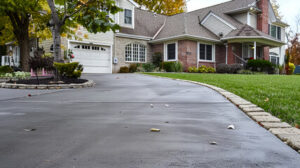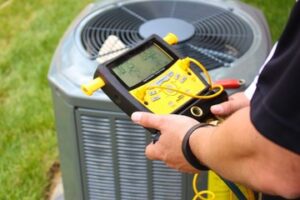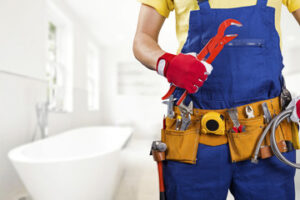A remodel requires a significant amount of time and energy. Plan on a timeline that will take weeks or even months. Consider creating a temporary kitchen away from the construction site so that you can at least cook, eat and store food.

Unless you’re handling the entire project yourself, locate, vet and hire designers and contractors. Keep lead times in mind for items like tile, countertops and custom cabinetry. Contact Kitchen Remodeling Lexington KY for professional help.
Whether you’re replacing your kitchen cabinets, adding an island, or tearing down walls to make space for a new layout, demolition is a necessary part of any renovation. It’s a messy process that produces a lot of dust and debris, but it sets the stage for your project’s success.
Demolition experts bring a level of expertise, efficiency and safety to the job that ensures it’s handled properly. They know what to look for and how to approach the work, reducing the risk of accidents or missteps that could derail your remodeling project. They can also access dumpsters and waste disposal services, making the entire process seamless for you.
When preparing for demolition, it’s important to shut off the water supply before beginning work. It’s also a good idea to disconnect any existing appliances, such as refrigerators and stoves, and move them away from the workspace. This prevents accidental shocks during the removal process and protects them from damage or theft.
Proper demolition can also reveal hidden problems that may need attention, such as water damage or mold. These issues can be addressed during the remodel, preventing costly and time-consuming repairs later on. It’s also an opportunity to make improvements to a room’s functionality by strategically removing or moving walls, adding electrical outlets or plumbing, and replacing old fixtures. This helps create a functional space that perfectly fits your lifestyle and needs.
Rough-In Work
Once all existing items have been removed, the rough-in work can begin. This includes any structural work and plumbing. The goal of this phase is to frame in new walls, add joists, and install the necessary mechanical, electrical, and plumbing lines. This is done before drywall is installed and is best handled by a professional team to avoid damage to existing pipes and plumbing fixtures.
When it comes to electrical rough-ins, this process includes running wiring through the framing, installing junction boxes for outlets and switches, and setting up circuit breakers. It is also important to install smoke and carbon monoxide detectors as well.
The plumbing rough-in process can be a bit more complicated. This involves laying in new water and gas pipes as well as ensuring they are correctly sized and properly routed for future expansions. Additionally, it is important to leave a little “wiggle room” in the plumbing rough-in dimensions so that future fixture upgrades can be easily implemented.
Once the plumbing and electrical rough-in work is complete, an inspector will visit to ensure that it meets all local code requirements and safety standards. Then, the finishing construction can begin. This is when the actual kitchen cabinetry, flooring, and appliances are installed. It is important to schedule your remodel with these installation dates in mind so that you have enough time for your project. This step can take anywhere from one week to a month depending on the specific product you are installing in your kitchen.
Cabinet Installation
After the rough-in work is complete, the next step in kitchen remodeling is cabinet installation. The process involves attaching cabinets to the wall, ensuring that they are level and plumb, and connecting them to each other and to the countertops if necessary. It also includes sanding and finishing the surfaces to ensure that they are smooth, clean and ready for use.
Cabinet installation is a time-consuming task, and the duration of the process can vary depending on the scope of the project. For example, if you are refacing your cabinets instead of replacing them completely, the project may take longer as the old doors and drawer fronts need to be removed before installing new ones.
Additionally, if the walls are uneven or need to be patched, this will add to the overall time of the project. It’s important to hire a professional contractor for this type of job to guarantee the results you’re looking for.
It’s possible to complete the cabinet installation process on your own, but involving professionals can help you avoid costly mistakes and save time. A skilled contractor can handle all aspects of the remodel, including addressing unexpected challenges that could delay the completion of the project. They can also assist you in choosing the right cabinet door style and color that complements your home and enhances its value. They can also provide insights into current design trends to help you make the most of your remodeling budget.
Appliance Installation
Once the rough-in is complete, contractors can move onto the final stage of kitchen remodeling: appliance installation. It’s important to choose appliances that coordinate with the color and style of cabinetry, countertops, and flooring for a polished look. Also, consider energy efficiency. Adding new appliances that meet EPA energy standards can cut utility bills and add value to the home by increasing the property’s appeal to eco-conscious buyers.
Many people remodel their kitchens for functional reasons, such as a desire to update outdated appliances or a changing lifestyle that necessitates a larger dining area or more kid-friendly features. In addition, some homeowners make a conscious decision to invest in a remodel to improve their home’s energy efficiency by installing green features like new insulation or LED lighting.
Before you start the remodel process, it’s a good idea to consult with several contractors to get estimates and determine which one best fits your needs and communicates well with you. Be sure to discuss your budget and kitchen checklist with contractors, and don’t accept estimates that are more than double your budget. Also, be wary of contractors who take a long time to return your call or email; this could be an indication that they are overbooked and may not be available to work on your project. A reputable contractor should be both competent and available to start the remodel as soon as possible.
Flooring Installation
When it comes to home improvement projects, kitchen remodeling is one of the most common and highest return projects available. Whether you’re trying to boost your home’s resale value or simply improve its functionality, these upgrades are a great way to make a significant impact without making major structural changes.
Once the walls have been finished, it’s time to add the flooring. If you’re installing a new floor, it’s important to choose materials that will complement the overall style of your Temecula home and your personal preferences. For example, a contemporary or modern kitchen might look better with sleek, shiny materials like ceramic tile, while a traditional or country home would look more appropriate with natural wood or stone flooring.
Linoleum and laminate are classic flooring options for remodelers on a budget, and they come in a huge variety of styles to fit any taste. For a more luxurious feel, hardwood floors have seen a resurgence in popularity. It’s essential to have your floors professionally sealed to ensure water resistance and general durability.
This is also a good opportunity to install any doors or windows that need replacing, as well as any caulking and weather stripping that might be needed for a more energy-efficient kitchen. Depending on the scope of your kitchen remodeling, this could be an extensive job. Ideally, this will be completed right before the countertops are installed to help avoid potential mistakes and delays.
Finishing Touches
Once you’ve completed all the major components of your kitchen remodel, it’s time to add the finishing touches that make the room feel completely your own. The options here are endless, from the practical to the decorative, so it’s important to take your time and choose a style that suits you.
Backsplashes can make a huge difference in your kitchen, adding texture and color to the space. There are a variety of materials to choose from, so finding one that works well with your countertops and cabinets is essential.
A beautiful tile backsplash is an easy way to add a pop of color, while stone or glass backsplashes offer a more subtle look. You can also add an accent wall to your kitchen, which is a great way to tie in the colors you’ve chosen for the backsplash with your overall design.
Cabinet hardware is another detail that can make a big impact. There are many different styles and materials to choose from, so finding the perfect knobs and handles for your new cabinets is easy. There are even smart home technology options for undercabinet lighting, so you can control the brightness with a smartphone app.
You can also upgrade your storage solutions in your kitchen, which will help you keep the space clean and organized. For example, adding a pull-out pantry or lazy Susans to your cabinets can give you more space to store items while still giving you easy access when needed.



